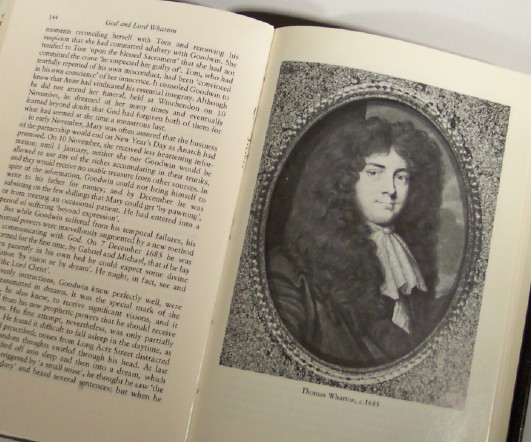Goodwin Wharton and the Fairies November 4, 2012
Author: Beach Combing | in : Modern , trackbackIn 1684 the Queen of Fairy was visiting the (fairy) Duke of Hungary in his estate under Moorfields (London), when the Duke hatched a dastardly plot. First he tried to poison her majesty with chocolate and then, having failed to ruin her insides, he attempted to blow up her subterranean palace with gunpowder.
If you don’t recognise this from your text books do not panic. This is not a crucial episode of seventeenth-century political history but part of the long-con played by fairy shyster Mary Parish on her dupe the aristocrat Goodwin Wharton, whose life we have previously celebrated here. The source? Goodwin Wharton’s still unpublished half a million word autobiography, kept in the British Museum (BL, Add. Mss 20.006-7). Wharton’s association with fairies stretched over twenty years: he (while sleeping) made love with several members of fairy royalty; he received constant messages from faery; and he even got, from under the fairy hill, a couple of magic peas that would allow invisibility. But he never came face to face with fairies for the simple reason that the fairies in question did not exist outside Mary’s criminal imagination.
So far so easy. But now Beach has a question. Is it possible that Mary’s manipulations and Goodwin’s recordings of the same may contain some valuable fairy folklore from the seventeenth century, a period for which we don’t have that much really good fairy material at the popular level? For example, on one occasion while expecting a fairy delegation in his rooms, Goodwin tidied up because he had heard that fairies loved tidiness. This certainly reflects fairy-lore in later centuries. Is it possible that other details of Mary’s fairy universe do the same? Take another detail. According to Mary the fairies were Catholic, but retained some Mosaic elements in their Christianity: fairies are often associated by Protestants with the old faith. However, Mary almost certainly went beyond popular lore when she gave details of the need to isolate menstruating fairy women… If there are some threads of traditional lore here they have been woven with some rainbow coloured threads from one of the most febrile eighteenth-century imaginations. Another example, size: according to Wharton fairies are actually human size but make themselves appear small using a special breastplate which demagnifies its wearer. Demagnifiying definitely does not come into traditional lore…
The first step in separating the imaginary chaff from the traditional grain would be to gather all fairy references from the autobiography. This is Beach’s nice way of asking whether anyone has the time to go to the British library and spend many hours reading through the half million words in Wharton’s autobiography. Another way forward would be to track down some of Wharton’s other, apparently disappeared writings. Beach now quotes from J. Kent Clark’s excellent biography (269):
[Wharton] was to write down and circulate a portion of his priceless knowledge. He had already composed some verses and a general tract on the nature of spirits. To these documents he added ‘a sharp letter’ about King James, a criticism of Catherine Fraser, and tracts upon the lowlanders [fairies] and upon fulfilment of prophecy.’
J.Kent Clark was unable to track these down. Can anyone help? drbeachcombing AT yahoo DOT com



